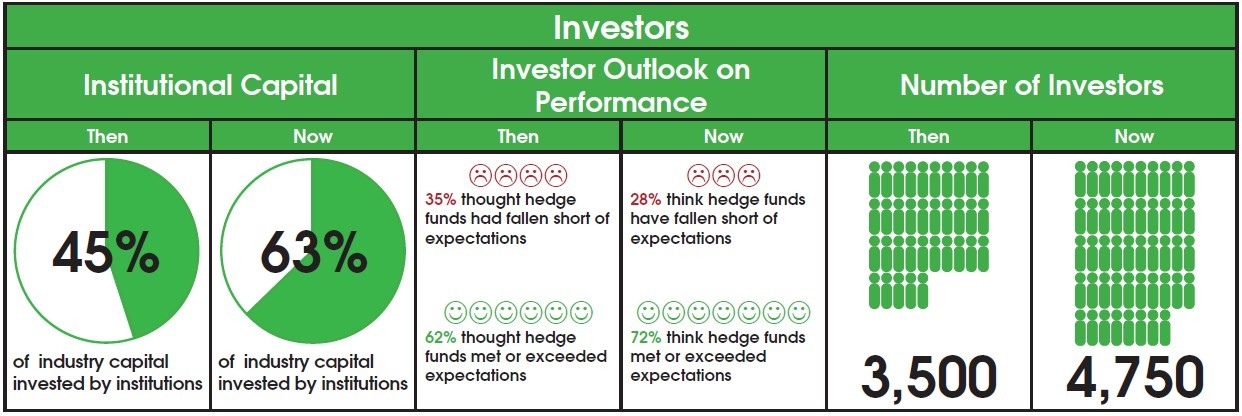The Truth About Hedge Funds and the Financial Crisis
Post on: 21 Июнь, 2015 No Comment

MORE ARTICLES BY Veronique de Rugy
2.06.15 9:00 am
1.06.15 10:00 am
Editor’s Note: Reason columnist Veronique de Rugy appears weekly on Bloomberg TV to separate economic fact from economic myth.
Myth 1: Hedge funds are highly leveraged.
Fact 1: The market exposure of most hedge funds is less than twice the percentage of assets under management.
Contrary to commonly-held belief, highly-leveraged hedge funds are the exception rather than the rule. Hedge funds use short sales and derivatives to manage risk and reduce losses when the market is performing poorly. In addition, hedge funds often borrow funds or use other forms of leverage to magnify gains.
Furthermore, hedge funds take no part in the process of underwriting new securities. Nor do they serve as brokers or dealers of securities and derivatives. These funds have a single line of business—asset management—and they typically use relatively small amounts of leverage to finance and profit from their investment activities.
A 2007 study of hedge fund leverage by Adrian Blundell-Wignall, a deputy director of the Organization for Economic Co-operation and Development (OECD), which included leverage from borrowed funds and implicit leverage from derivatives, estimated that average hedge fund leverage was 3.9-to-1 (which means that for every $3.9 in hedge fund assets, $1 was equity and the rest was borrowed (or the economic equivalent of borrowing was achieved by using derivatives), with the bulk of the leverage coming from derivatives. In 2008, the International Monetary Fund (IMF) estimated that average global hedge fund leverage from borrowed funds had a ratio of 1.4-to-1.
The chart above is based on data from the McKinsey Global Institute; note that it measures leverage in a slightly different way than the OECD does (gross leverage here is assets plus liabilities divided by assets) but the overall outcome is quite similar. As you can see, even at its peak, total leverage in the hedge fund industry was not more that 3.5 times the level of assets under management—far below the leverage ratio of banks.
For context, consider that banks are typically leveraged at least 10-to-1 and investment banks are usually leveraged at least 20-to-1. In the case of investment banks, this means that for every dollar actually held by the investment bank, it had borrowed between $20 and $30.
More interestingly, as New York Law School professor Houman Shadab notes in his article “Hedge Funds and the Financial Crisis ,” the contrast between the levels of leverage in these different components of the financial sector became even more pronounced in the lead-up to the financial crisis. For example, banking sector leverage usually ranged from 12-to-1 to 17-to-1 while major U.S. investment bank leverage became as high as 33-to-1 in recent years.
Myth 2: The hedge fund industry’s tendency to take excessive risks, combined with a lack of regulation, was an important cause of the financial crisis.
Fact 2: Not only did hedge funds not precipitate the financial crisis, they did nothing to exacerbate it. If anything, hedge funds have helped the economy to recover more quickly.
It is a fact that hedge funds are not as heavily regulated as other financial institutions. Also, they are not required to register with investment authorities or report on their activities. As a result, it is often alleged that hedge funds played a role in the emergence of the credit crisis, contributing to volatility through short-selling and by selling shares as a result of de-leveraging and redemptions.
The data, however, does not support such theories. While hedge funds have often seen greater payoffs than the larger financial industry, they have done so while taking fewer risks.
McKinsey Global Institute research shows. for instance, that a significant portion of hedge funds have delivered higher and less volatile returns than investments in public equities and bonds over time, including during the financial crisis.
McKinsey also found that since 1990 investors in hedge funds have earned higher returns than investors whose portfolios contain only equities and bonds. Between 1990 and 2008, an index of hedge funds outperformed a range of blended portfolios of U.S. bonds and equities. The hedge fund index produced 12 percent average annual returns over the period, compared with 7.8 percent for a portfolio of only equities and 7.2 percent for a portfolio of only bonds.














